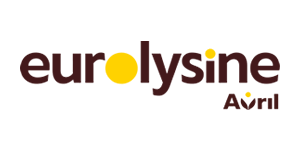
- Rhys Evans
- HGUt (Norway)
- rhys@hgut.no
Commission
| Vice-President | Roberto Mantovani | 2023-2026 |
| Vice-President | Celine Vial | 2022-2025 |
| Vice-President | Pasquale De Palo | 2024-2027 |
| Secretary | Jackie Tapprest | 2024-2027 |
| Secretary | Emanuela Valle | 2024-2027 |
| Industry Repr. | Samy Julliand | 2024-2027 |
| Industry Repr. | Claire Neveux | 2023-2026 |
| Young Club | Kirsty Tan | 2023-2026 |
| Young Club | Juliette Auclair-Ranzaud | 2023-2026 |
The Horse Commission is one of the oldest commissions of the EAAP. This Commission has been chaired by many presidents coming from different experiences, institutions, countries, etc. The key words that characterized the activity of the Horse Commission in the past were: Genetics/biotechnology, Nutrition and feeding, Management and Welfare, Health, Reproduction, Livestock and Sustainable Agriculture. In recent years, because of the new challenge of the Horse sector, other topics were considered: socio-economy and horse industry, equine education, therapeutic riding, equid milk production. All these activities were implemented by different working groups, starting with the Interstallion (born I the 80’s) and the Nutrition (born in 2000). More recently, in the last 10 years, the Horse Commission constituted 3 new working groups that concerned socio-economy, equine education and therapeutic riding topics. Each one of these working groups has a chair and some members. Moreover, some special activities were carried out as satellites of the Annual EAAP Conference. I refer mainly to the activity of the Interstallion WG and of the Nutrition WG; this last organizes a satellite meeting known as “European Workshop on Equine Nutrition – EWEN” held every 2 years in different European countries (the last was in Portugal and the next will be in Germany). The WG has a committee constituted by the chair and 6 members coming not only from research field.
In the last 10 years, the Horse Commission was strongly involved in the publication of EAAP Special Issues, Scientific Series, Technical Series and Proceedings of Conferences.
- Emphasize the scientific quality of the program in the preparations of the annual meetings and to invite top scientists as speakers
- Develop an attractive few days program for different types of visitors with different needs
- Improve the cooperation with extra European countries (eg.: USA and South American Countries, developing a system of scientific exchanges involving also young scientists
- Develop a flexible program able to attract scientists, breeders associations and industry representatives
- Develop a system of scholarships for young scientists
- Continue the publication of scientific EAAP series finalized to a proper application in animal production to professionalize production methods
- Sustain the Horse website with emphasis to young researchers, practitioners and associations improving the “Horse mailing list”







